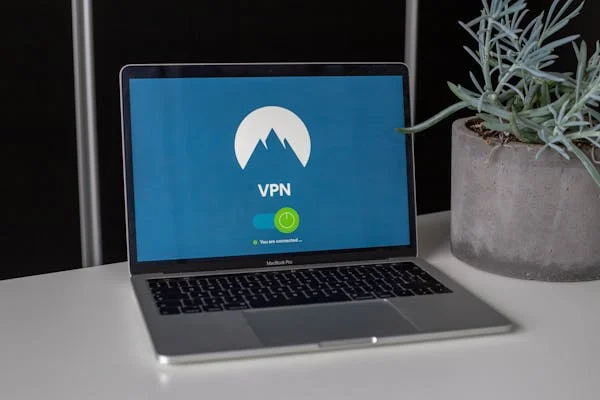Introduction
For tax professionals, Does Lacerte work with Dropbox Tax Software is one of the most reliable tools for handling complex tax filings. However, as businesses transition to using cloud services like Dropbox for file storage and synchronization, a common question arises: does Lacerte work with Dropbox? While Dropbox offers convenience, using it in conjunction with Lacerte may lead to issues. In this article, we explore the risks, best practices, and alternatives to using Dropbox with Lacerte.
What Is Lacerte Tax Software?
Lacerte Tax Software is an advanced tool developed by Intuit for tax professionals. It provides a comprehensive suite of features designed to streamline the tax preparation process. From individual returns to corporate taxes, Lacerte enables users to file accurately and efficiently. The software’s features include multi-user support, client management, compliance tools, and a user-friendly interface.
Core Features of Lacerte Tax Software
Lacerte is a feature-packed software solution for tax professionals. Some of its core features include:
- Multi-Year Tax Management: Allows users to manage multiple years of tax data in one place.
- Audit Support: Includes tools designed to assist with audits, ensuring that filings meet regulatory standards.
- Data Integration: Seamlessly integrates with accounting software like QuickBooks, providing a unified experience for managing financial data.
- Tax Calculations and Forms: Automatically calculates taxes and generates a wide range of tax forms, from individual to business filings.
Why Do Tax Professionals Use Cloud Storage?
Cloud storage platforms like Dropbox have become incredibly popular for their ability to store files remotely and make them accessible from multiple devices. This capability is particularly beneficial for tax professionals working in remote teams or needing access to files from multiple locations.
The Attraction of Dropbox
Dropbox allows users to:
- Store Files Securely: Files are encrypted and can be accessed from anywhere with an internet connection.
- Sync Files Automatically: Changes made to a file are instantly updated across all linked devices, ensuring real-time collaboration.
- Collaborate Easily: Dropbox makes it easier for teams to collaborate on shared files by providing easy sharing and editing features.
These benefits make Dropbox an attractive choice for professionals in all industries, including those handling sensitive financial data. However, the use of Dropbox with Lacerte requires caution.
The Risks of Using Dropbox with Lacerte
While Dropbox can be beneficial for many types of file storage, it does not work well with Lacerte. The software’s intricate database structure and real-time data access requirements are incompatible with cloud storage platforms like Dropbox. Let’s explore the specific risks involved.
1: Data Corruption
One of the biggest risks of using Dropbox with Lacerte is data corruption. Lacerte relies on a local database to store tax information. Dropbox, however, is designed to sync files across multiple devices. This syncing process can interfere with Lacerte’s database operations and lead to inconsistencies in the data. Changes to files may not sync properly, and, as a result, you could experience data corruption.
2: Conflicting File Versions
Dropbox uses a file-locking system to prevent conflicts when multiple users attempt to access the same file. However, Lacerte often requires multiple users to work on the same dataset simultaneously. This can create conflicts when Dropbox attempts to sync different versions of the same file, leading to incomplete or corrupted data.
3: Slow Performance
Lacerte requires consistent and high-performance access to tax data. Dropbox’s synchronization process can slow down the performance of Lacerte, especially in large firms where numerous users access files simultaneously. This can lead to delays, errors in processing, and poor user experience.
4: Loss of Data Integrity
Dropbox’s syncing mechanism may not always work as expected. If the software syncs incomplete or outdated versions of a file, it could lead to loss of data integrity. Tax professionals depend on the accuracy of the data, and even a small discrepancy could have significant consequences for clients and regulatory compliance.
Intuit’s Recommendations for Lacerte Users
Intuit, the developer behind Lacerte, strongly advises against using cloud storage services like Dropbox, Google Drive, and OneDrive for storing or syncing Lacerte files. Their official guidance stresses that these services are not designed to support Lacerte’s networked database, and using them could result in serious data issues.
Lacerte’s System Requirements
Intuit specifies certain system requirements for running Lacerte effectively. These include:
- Operating System Compatibility: Lacerte works best on Windows operating systems, with specific versions of Windows Server recommended for multi-user environments.
- Local Network Configuration: Lacerte should be installed on a local network or a secure hosted server, not on a cloud drive.
Alternative Data Storage Options
Intuit recommends storing your Lacerte data on local network drives, as these provide better support for Lacerte’s database structure and ensure smoother operation. By using local storage, you can avoid the risks associated with cloud synchronization.
Best Practices for Storing Lacerte Files
If you’re looking for ways to store Does Lacerte work with Dropbox files safely, it’s crucial to follow best practices that ensure data integrity and security. Let’s explore some of the safest and most efficient ways to handle Lacerte data.
Avoid Using Cloud Sync Services
The most important rule for Lacerte users is to avoid using cloud sync services like Dropbox for storing Lacerte files. These services can disrupt the proper functioning of the software and risk data corruption.
Use a Dedicated Server or Network Drive
For businesses or teams that use Lacerte across multiple workstations, using a dedicated network server is the best practice. A secure, on-site server ensures that all users can access Lacerte’s database without interference from external syncing services.
Create Backups Locally or in Secure Cloud Storage
While you shouldn’t sync files with Dropbox, creating secure backups is essential. Intuit recommends creating regular backups of your Lacerte data and storing these backups in a secure location. You can store these backups in an external hard drive, local server, or a cloud backup service designed for secure data storage (e.g., Amazon S3).
Benefits of Remote Hosting for Lacerte Data
For tax professionals looking to access Lacerte remotely, consider utilizing hosted solutions. Lacerte offers a cloud hosting service that enables you to access your software securely from any device. Hosting eliminates the risks associated with using Dropbox and ensures your data remains secure and accessible.
What Is Lacerte Hosting?
Lacerte Hosting is a solution that allows you to run Lacerte Tax Software on a remote server. This provides access to Lacerte from anywhere with an internet connection while maintaining the security and stability of the software.
Benefits of Lacerte Hosting
- Access from Anywhere: Whether you’re working remotely or at the office, Lacerte Hosting allows access from any location with internet access.
- Data Security: Your data is stored on secure servers with encryption, ensuring that sensitive tax information remains protected.
- No Risk of Data Corruption: Since Lacerte Hosting is optimized for the software’s needs, you won’t experience the data syncing issues that can arise from using services like Dropbox.
Third-Party Hosting Providers for Lacerte
If you don’t want to use Lacerte’s official hosting service, there are several third-party providers that offer hosting solutions optimized for tax software like Lacerte. When choosing a third-party hosting provider, consider the following:
What to Look for in a Hosting Provider
- Security Features: Ensure the provider offers encrypted connections and complies with industry standards for data protection.
- Scalability: As your firm grows, you may need more storage or additional user licenses. Look for a provider that offers flexible plans.
- Technical Support: Choose a provider that offers 24/7 technical support to address any issues promptly.
- Compatibility with Lacerte: Make sure the hosting service is specifically optimized for Lacerte Tax Software to ensure seamless operation.
How to Migrate to a More Secure Data Storage Solution
If you’re currently using Dropbox or another cloud sync service to store your Lacerte files, migrating to a secure solution is crucial. Follow these steps to ensure a smooth transition:
- Stop Syncing Your Lacerte Files: Disable Dropbox or other sync services from accessing Lacerte’s files.
- Backup Your Data: Create a backup of all your Lacerte files before making any changes to your storage system.
- Set Up a Networked Drive or Server: Use a local network drive or server for storing your Lacerte files. This ensures that all users can access the software without cloud-based syncing issues.
- Consider Hosting Options: If you need remote access to your Lacerte data, consider Lacerte Hosting or a third-party hosting service optimized for Lacerte.
Common Issues and Troubleshooting Tips
Despite taking precautions, issues may still arise when using Lacerte with Dropbox or other storage platforms. Here are some common problems and troubleshooting tips:
1: Data Sync Errors
If you experience sync errors or corrupted files when using Dropbox, stop using the sync feature immediately. Move all Lacerte data to a secure network drive and ensure that Dropbox is no longer syncing those files.
2: Slow Performance
If Lacerte is running slow, the issue may be related to syncing conflicts. Ensure that Dropbox is not attempting to sync Lacerte files and consider using local storage or a hosting solution.
3: File Conflicts
If file conflicts occur, it could be due to Dropbox syncing different versions of Lacerte files. Revert to the most recent version of the file stored on your network drive, and disable Dropbox syncing for Lacerte-related folders.
Conclusion
While Does Lacerte work with Dropbox is an excellent cloud storage service for many types of data, it is not compatible with Lacerte Tax Software. Syncing Lacerte files through Dropbox can lead to serious issues such as data corruption, slow performance, and loss of data integrity. To ensure your tax data remains secure and intact, store your Lacerte files on a local network drive or use secure hosting services designed for tax professionals. By following these best practices, you can avoid the risks of using Dropbox with Lacerte and maintain the efficiency and security of your tax preparation process.
FAQs: Does Lacerte Work with Dropbox?
Can I use Dropbox with Lacerte?
No, Dropbox is not compatible with Lacerte due to risks like data corruption and performance issues.
What are the risks of using Dropbox with Lacerte?
Risks include data corruption, conflicting file versions, slow performance, and loss of data integrity.
What storage options are best for Lacerte?
Use a dedicated network drive or Lacerte Hosting for secure, reliable storage.
Can Lacerte be used with cloud services?
Lacerte can be used with cloud hosting services designed specifically for it.
What should I do if I’ve used Dropbox with Lacerte?
Stop syncing files and move them to a secure, local network drive or server.
Does Intuit recommend using Dropbox with Lacerte?
No, Intuit advises against it and recommends local network drives or Lacerte Hosting.







